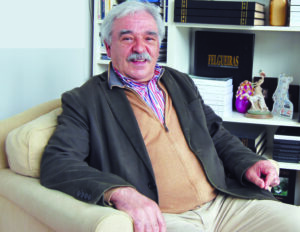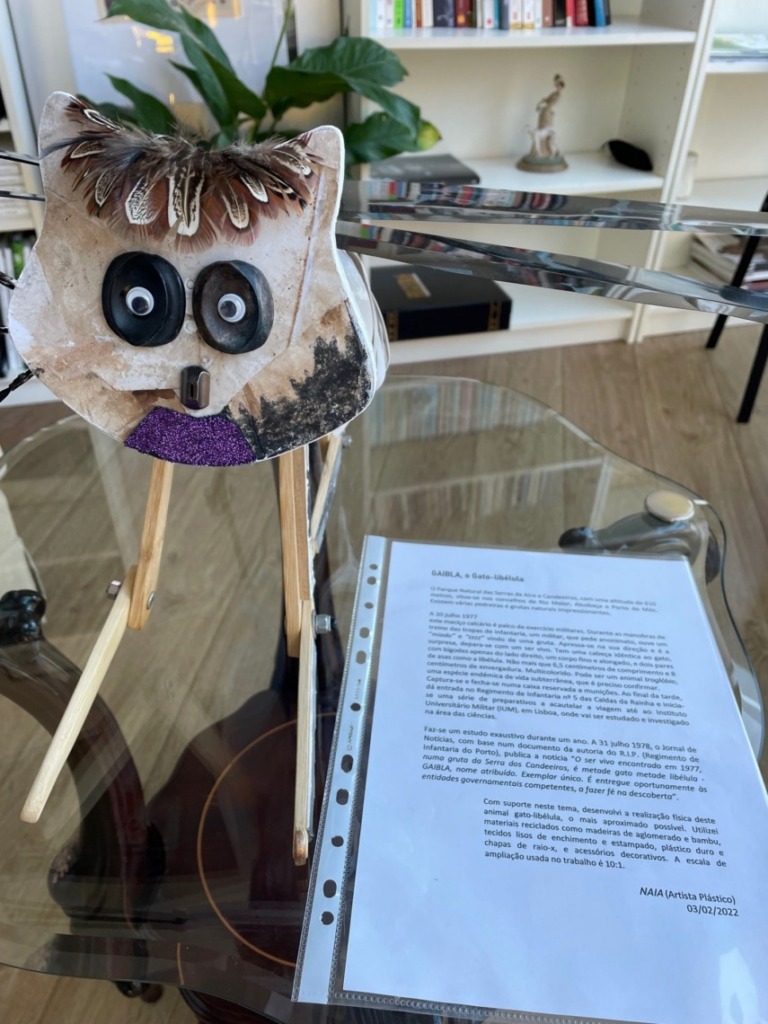O Parque Natural das Serras de Aire e Candeeiros, com uma altitude de 610 metros, situa-se nos concelhos
de Rio Maior, Alcobaça e Porto de Mós. Existem várias pedreiras e grutas naturais impressionantes.
A 20 julho 1977, este maciço calcário é palco de exercício militares.
Durante as manobras de treino das tropas de infantaria, um militar, que pede anonimato, ouve um “miado” e “zzzz” vindo de uma gruta. Apressa-se na sua direção e é a surpresa, depara-se com um ser vivo. Tem uma cabeça idêntica ao gato, com bigodes apenas do lado direito, um corpo fino e alongado, e dois pares de asas como a libélula. Não mais que 6,5 centímetros de comprimento e 8 centímetros de envergadura. Multicolorido. Pode ser um animal troglóbio, uma espécie endémica de vida subterrânea, que é preciso confirmar.
Captura-se e fecha-se numa caixa reservada a munições. Ao final da tarde, dá entrada no Regimento de Infantaria nº 5 das Caldas da Rainha e inicia-se uma série de preparativos a acautelar a viagem até ao Instituto Universitário Militar (IUM), em Lisboa, onde vai ser estudado e investigado na área das ciências.
Faz-se um estudo exaustivo durante um ano. A 31 julho 1978, o Jornal de Notícias, com base num documento da autoria do R.I.P. (Regimento de Infantaria do Porto), publica a notícia “O ser vivo encontrado em 1977, numa gruta da Serra dos Candeeiros, é metade gato metade libélula – GAIBLA, nome atribuído. Exemplar único. É entregue oportunamente às entidades governamentais competentes, a fazer fé na descoberta”.
Com suporte neste tema, desenvolvi a realização física deste animal gato-libélula, o mais aproximado possível. Utilizei materiais reciclados como madeiras de aglomerado e bambu, tecidos lisos de enchimento e estampado, plástico duro e chapas de raio-x, e acessórios decorativos. A escala de ampliação usada no trabalho é 10:1.

Por NAIA – (Artista Plástico) 03/02/2022
GAIBLA, tha Dragon-fly cat
The Nature Park of Serras de Aires e Candeeiros, 610 metres high above sea level, is locates in the counties of Rio Maior, Alcobaça and Porto de Mós. Several quarries ans impressive natural caves can be found there.
On the 20th july 1977, when some military manoeuvres take place on this limestone massif, an infantry soldier, who asks for anonymity, hears a “meow” and a “zzzz” coming out of a cave. He rushes there and, to his surprise, he comes across a living being. Ithas a cat-like head with whiskers on the leftside only,
an elongated thin body and two pairs of wings like a dragon-fly. Not more than 6,5 cmm long and 8 cmwingspan. Multicoloured. It may be a troglobite animal, an endemic species of underground life, but this must be confirmed.
It is captured and put into an ammunition box. By the end of the evening, it arrives to the Infantry Regiment No.5 in Caldas da Rainha and several preparations take place to deliever it safely to the Military University Institute (IUM) in Lisbon, where it will be studies and researched by scientists.
An exhaustive research is made for one year. On the 31st july 1978, the newspaper “Jornal de Notícias”, based on a document by The Oporto announces that “the living being found in 1977 in a cave in Serra dos Candeeiros is half cat, half dragon-fly, and therefore named GAIBLA. Unique specimen. It will be handed over,
in due course, to the competent government authorities”.
Having this theme in mind, I developped the physical representaion of this dragon-fly cat animal as really as I could. I used recycled materials such as chipboard and bamboo, plain fabric for the stuffing and printed fabric, hard plastic , x-ray plates and decorating accessories. The magnification scale of the work is 10:1.
_________________________
NAIA (Visual Artist) 03/02/2022


